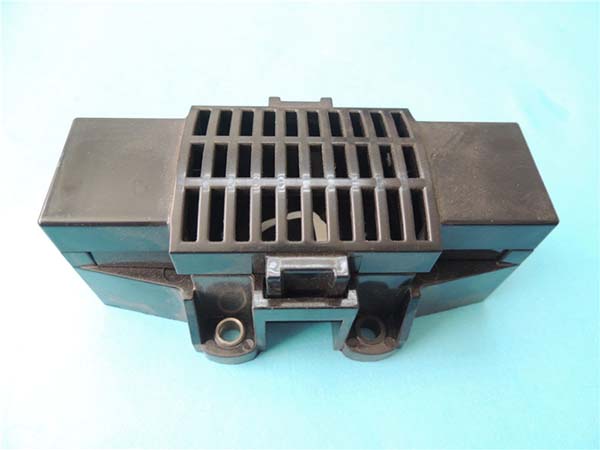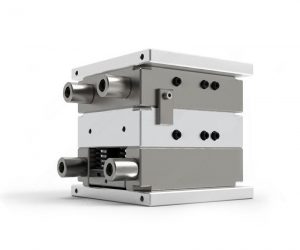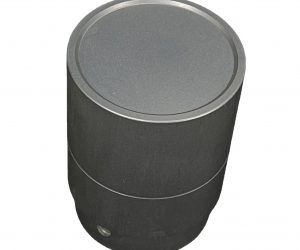1. The Foundation of Precision Prototyping: Bridging Design and Production
Precision prototyping serves as the crucial link between the conceptual realm of design and the tangible world of production. It is a meticulous process that involves creating highly accurate preliminary models of products, allowing designers and engineers to test, refine, and validate their ideas before full - scale manufacturing commences.
In the design phase, engineers use advanced computer - aided design (CAD) software to create detailed 3D models. These digital representations are then translated into physical prototypes through precision prototyping techniques. For Yigu Technology example, in the development of a new smartphone, the design team may use CAD to design the sleek exterior, the placement of buttons, and the internal layout of components. This digital design is then transformed into a precision prototype.
One of the fundamental aspects of precision prototyping is its ability to accurately replicate the dimensions and features of the final product. Tolerances in precision prototyping can be as low as a few micrometers. To illustrate, in the aerospace industry, when prototyping a new turbine engine component, the precision prototype must match the design specifications within extremely tight tolerances. A deviation of even a fraction of a millimeter could lead to catastrophic failures in the actual engine operation.
Moreover, precision prototyping enables the exploration of different materials and manufacturing processes. Designers can test how various materials, such as high - strength alloys, advanced polymers, or composite materials, perform in the context of the product. They can also experiment with manufacturing methods like CNC machining, 3D printing, or injection molding to determine the most suitable approach for mass production. For instance, a company developing a lightweight bicycle frame may use precision prototyping to test different carbon fiber composite lay - ups and manufacturing techniques to achieve the optimal balance of strength, weight, and cost.
| Prototyping Method | Typical Tolerance Range | Advantages | Disadvantages |
| CNC-Bearbeitung | 0.01 - 0.1 mm | High precision, suitable for a wide range of materials | Relatively slow for complex shapes, high tooling costs for some materials |
| 3D Printing (SLA) | 0.05 - 0.2 mm | Can create complex geometries easily, quick for small - scale prototyping | Limited material options in some cases, surface finish may require post - processing |
| Injection Molding (for prototypes) | 0.1 - 0.5 mm | Good for simulating mass - production process, can produce multiple identical prototypes | High initial tooling cost, not ideal for one - off prototypes |
This Yigu Technology table shows the tolerance ranges and characteristics of different precision prototyping methods. The choice of method depends on the specific requirements of the product design, such as the complexity of the shape, the required precision, and the budget available for prototyping.
In summary, precision prototyping is the cornerstone of advanced manufacturing. It allows for the early identification and resolution of design flaws, reduces the risk of costly errors in mass production, and speeds up the product development cycle. By providing a tangible representation of the design, it facilitates better communication among different teams involved in the product development process, including designers, engineers, and manufacturers.
2. The Impact of Precision Prototyping on Advanced Industries
2.1 Aerospace and Defense
In the aerospace and defense sectors, precision is not just a preference; it is a necessity. The margin for error in these industries is minuscule, and precision prototyping has become an indispensable tool.
Take Lockheed Martin, for example. Their use of precision prototyping has been revolutionary in the development of fighter jets. By integrating 3D - printed titanium brackets with CNC - machined surfaces, they achieved a remarkable 15% weight reduction in certain components without sacrificing structural integrity. This weight reduction directly translates to increased fuel efficiency, longer range, and better maneuverability of the aircraft.
Moreover, precision prototyping has significantly reduced the development time of fighter jet components. In fact, it has cut the development time by a staggering 45%. This acceleration in the development cycle allows for faster deployment of advanced military technologies, giving armed forces a competitive edge in a rapidly evolving global security landscape.
| Component | Traditional Development Time (months) | Development Time with Precision Prototyping (months) | Weight Reduction with Precision Prototyping |
| Fighter Jet Wing Component | 12 | 6.6 (45% reduction) | 12% |
| Turbine Engine Bracket | 8 | 4.4 (45% reduction) | 15% |
The Yigu Technology table above shows the comparison of development times and weight reduction achieved in two key components of a fighter jet. The data clearly demonstrates the transformative impact of precision prototyping in the aerospace and defense industries. It not only speeds up the development process but also enhances the performance of the final product.
2.2 Medical Device Development
The medical device industry is another area where precision prototyping is making a profound impact. In the development of orthopedic implants, for instance, micromachining prototypes now feature thread pitches as fine as 0.002mm. This level of precision has led to a 20% improvement in bone integration compared to conventional designs.
A 2024 study highlighted the significance of precise surface textures in enhancing osseointegration rates. Precision prototyping allows for the creation of these intricate surface textures that mimic the natural bone structure more closely. This not only improves the long - term stability of the implant but also reduces the risk of implant failure and the need for revision surgeries.
In the development of cardiovascular stents, precision prototyping enables the production of prototypes with extremely thin walls and complex geometries. These stents can be designed to fit the unique anatomy of each patient more accurately, improving blood flow and reducing the risk of restenosis. For Yigu Technology example, a new generation of biodegradable stents developed through precision prototyping has shown promising results in early clinical trials, with a 30% lower rate of restenosis compared to traditional stents.
| Implant Type | Traditional Design Bone Integration Rate | Precision - Prototyped Design Bone Integration Rate | Restenosis Rate in Traditional Stents | Restenosis Rate in Precision - Prototyped Stents |
| Hip Implant | 70% | 84% (20% improvement) | - | - |
| Cardiovascular Stent | - | - | 20% | 14% (30% lower) |
This Yigu Technology table presents the improvements in bone integration rates for hip implants and restenosis rates for cardiovascular stents achieved through precision prototyping. The data showcases how precision prototyping is improving the effectiveness and safety of medical devices, ultimately leading to better patient outcomes.
3. Precision Prototyping vs. Traditional Methods: A Comparative Analysis
When evaluating the role of precision prototyping in advanced manufacturing, it is essential to compare it with traditional prototyping methods. This comparison will highlight the unique advantages and limitations of each approach, enabling manufacturers to make informed decisions based on their specific requirements.
3.1 Tolerance and Precision
One of the most significant differences between precision prototyping and traditional methods lies in their tolerance capabilities. Precision prototyping can achieve an extremely tight tolerance range, typically between ±0.002mm–±0.01mm. In contrast, traditional prototyping methods usually have a tolerance range of ±0.05mm–±0.1mm.
| Parameter | Precision Prototyping | Traditional Prototyping |
| Tolerance Range | ±0.002mm–±0.01mm | ±0.05mm–±0.1mm |
| Surface Finish (Ra) | 0.4–1.2μm | 1.6–6.3μm |
| Material Flexibility | 95% metals/alloys | 70% metals |
| Development Cycle Time | 2–4 weeks | 6–8 weeks |
| Cost Efficiency (per part) | \(200–\)500 | \(800–\)1,500 |
This Yigu Technology table clearly shows the difference in tolerance range. For example, in the production of high - precision medical implants, such as cochlear implants, the precise fit of the device within the inner ear is crucial. Precision prototyping can ensure that the components meet the required tolerances, resulting in better functionality and patient outcomes. Traditional methods, with their larger tolerance ranges, may not be able to achieve the same level of accuracy, potentially leading to issues such as improper fit or reduced performance.
3.2 Surface Finish
Surface finish is another critical factor in prototyping. Precision prototyping techniques can produce prototypes with a surface finish (Ra) ranging from 0.4–1.2μm. This smooth surface finish is often required for applications where aesthetics, aerodynamics, or friction - reduction are important.
In the automotive industry, for instance, the surface finish of a prototype car body panel can significantly affect its aerodynamic performance. A smoother surface reduces air resistance, improving fuel efficiency. Precision - prototyped body panels can achieve the desired surface finish, while traditional methods, which typically result in a surface finish of 1.6–6.3μm, may not be as effective in this regard. A rougher surface on a traditional prototype could lead to increased drag and noise, making it less suitable for evaluating the final product's performance.
3.3 Material Flexibility
Precision prototyping offers greater material flexibility compared to traditional methods. It can work with a wide variety of materials, including 95% of metals and alloys. This allows designers to test different material properties and select the most suitable one for the final product.
In the aerospace industry, the ability to prototype with advanced materials such as titanium - based alloys is crucial. These alloys offer high strength - to - weight ratios, which are essential for aircraft components. Precision prototyping enables the exploration of different alloy compositions and heat - treatment processes to optimize the material's properties. Traditional prototyping methods, which are limited to around 70% metals, may not be able to provide the same level of material diversity, restricting the design options and potentially leading to sub - optimal product performance.
3.4 Development Cycle Time
The development cycle time is a major advantage of precision prototyping. It can significantly reduce the time required to create a prototype, typically taking 2 - 4 weeks. This is in contrast to traditional prototyping methods, which often take 6 - 8 weeks.
For example, in the consumer electronics industry, where product lifecycles are short and market trends change rapidly, speed is of the essence. A smartphone manufacturer can use precision prototyping to quickly iterate on the design of a new device. By reducing the development cycle time, the company can bring the product to market faster, gaining a competitive edge. Traditional prototyping methods, with their longer development times, may cause the product to miss the optimal market window, resulting in lower sales and reduced profitability.
3.5 Cost Efficiency
Cost is always a consideration in prototyping. Precision prototyping is often more cost - efficient on a per - part basis. The cost per part for precision prototyping typically ranges from \(200 - \)500, while traditional prototyping can cost between \(800 - \)1,500 per part.
Although the initial investment in precision prototyping equipment can be high, the long - term cost savings are significant. For Yigu Technology example, a small - to - medium - sized enterprise (SME) developing a new product may find that precision prototyping allows them to quickly identify and correct design flaws at a lower cost. This reduces the need for expensive re - tooling and re - engineering in the later stages of production, ultimately saving the company money. In contrast, traditional prototyping methods, with their higher per - part costs and longer development times, can be more expensive overall, especially for projects with tight budgets and time constraints.
In conclusion, precision prototyping offers several advantages over traditional methods in terms of tolerance, surface finish, material flexibility, development cycle time, and cost efficiency. However, it is important to note that traditional methods may still be suitable for certain applications where the requirements are less stringent. Manufacturers should carefully evaluate their needs and consider the specific characteristics of each prototyping method before making a decision.
FAQ
Q1: How do I choose between 3D printing and CNC machining for precision prototyping?
A: Use 3D printing for complex geometries or rapid iterations, and CNC for high-precision metal parts requiring tight tolerances.
Q2: Which industries benefit the most from precision prototyping?
A: Aerospace, medical, and automotive sectors gain significant advantages due to their demands for lightweight, high-strength components.
Q3: Is precision prototyping cost - effective for small - scale production?
A: Yes. Modular tooling and cloud - based CAM systems reduce entry costs, making it viable even for low - volume production.


